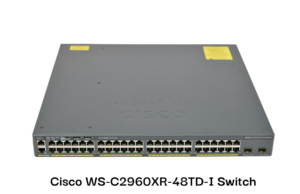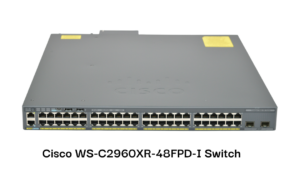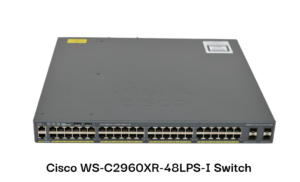Planning a data network requires a sophisticated knowledge of technologies and an understanding of how to design a secure, reliable, and efficient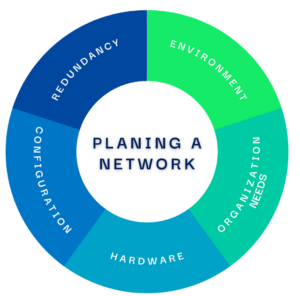 infrastructure. But it doesn’t need to be a daunting task – with careful planning, you can create an efficient and secure network that will serve your business needs. With the right approach and attention to detail, an optimized data network can provide organizations with a powerful tool for productivity and success. Let’s discuss the basics of planning a data network and provide tips for achieving a successful implementation.
infrastructure. But it doesn’t need to be a daunting task – with careful planning, you can create an efficient and secure network that will serve your business needs. With the right approach and attention to detail, an optimized data network can provide organizations with a powerful tool for productivity and success. Let’s discuss the basics of planning a data network and provide tips for achieving a successful implementation.
What Is A Data Network?
A data network is a series of connected devices that send and receive information from one another. A basic network consists of devices such as computers which are connected to switches, routers, firewalls, and modems. They are vital for communication between all individuals and organizations and allow users to access and share resources, like files, applications, and more. They are also used to create a secure connection between two or more remote locations or to facilitate communications between multiple users, like remote working offices. For the network to establish communication, it utilizes Transmission Control Protocol (TCP), User Datagram Protocol (UDP), and the Internet Protocol (IP), which are the set of rules governing how it should be packetizing, addressing, transmitting, routing, and receiving, data.
Types Of Data Networks
The first step to creating a data network is to determine the type of network your organization will require to meet your needs. There are many types of data networks, including wired networks such as Ethernet, wireless networks such as Wi-Fi, wide area networks (WAN), local area networks (LAN), metropolitan area networks (MAN), and even personal area networks (PAN). Each of these networks is designed to connect different types of devices, allowing them to transfer data and communicate with one another. The most common types of networks are LAN, which are physically localized networks such as homes, small buildings, and schools, and WAN, which are for larger networks that cover a larger area such as hospitals with multiple buildings spanning multiple geographical locations. The type of network your organization requires will depend on the number and type of users and the purpose and functionality. Additional information about the different types of networks can be found in one of our previous articles.
Planning A Data Network
This process begins with understanding your organization’s network needs and the environment in which it will be used. It is important to identify what type of environment the network will be in, such as a home or office, and how many devices will be connected. It is also important to determine the expected amount of traffic and the level of interoperability it needs to have. Additionally, it is important to establish how the network will be accessed by members of the organization, such as through password protection, or a user authentication system. It will also need to be determined the physical components your organization has or what will have to be added to have it function properly. Some physical components to consider are power sources, mounts, line drops for users, and ISP connection (Internet Service Provider). Once you have a clear understanding of the organization’s network needs and the environment it will be used in, you will be able to make the necessary choices to ensure reliability.
The second step is to choose the right type of network hardware, such as routers, switches, firewalls, and access points. Choosing the right equipment for your network is an important decision, as it will determine the performance, security, and scalability of your network. When choosing the right equipment for your network, there are several factors to consider. You need to consider your budget, the size and scope of your network, bandwidth requirements, security, and the scalability that you will need. The secondary market for networking equipment is a great option for tight budgets because it offers the opportunity to purchase reliable equipment at a fraction of the cost of buying new.
Next, you will need to configure your network for optimal performance, which can include setting up security protocols, setting up a Virtual Private Network (VPN), ensuring it is properly segmented, and gauging the required port speed between devices. Configuring your network can be a tricky process. It’s important to assess your experience level and the size of your network before deciding to manually configure your network or opt for a cloud-based solution, like the Meraki line. If you have a small network and have some experience with network configuration, you may be able to handle the process manually. However, if you don’t have a lot of experience or your network is larger or more complex, it’s probably best to use a cloud-based solution, which can provide more options for customization and scalability. If you’re unsure about your experience level, it’s best to consult with a professional who can help assess your needs and recommend the best solution for you.
Finally, you should configure your network for maximum redundancy, so that if one component fails, the other components can still maintain the integrity of the network. For example, if you have a redundant power supply unit in a switch, and the other power supply unit fails, the redundant power supply unit will immediately assume the role of the main source of power so the switch and the network will not go down. By implementing redundant components and data paths, you can create a network that is both more resilient and cost-effective. According to Chris Hoosline, a Network Technician, with seven years of industry experience, “Any amount of downtime is very likely going to cost more than the price of a second switch or router.” Redundancy is an important element of a reliable and efficient system. Redundancy reduces the likelihood of system failure by providing multiple paths for data to travel, thereby eliminating single points of failure. This helps to minimize downtime and can help you save money on costly repairs or hardware replacements. Additionally, redundant components can help to increase the overall performance of the system, leading to improved productivity and user satisfaction. With the right hardware and configuration, you can create a reliable data network that will keep your data secure and available.
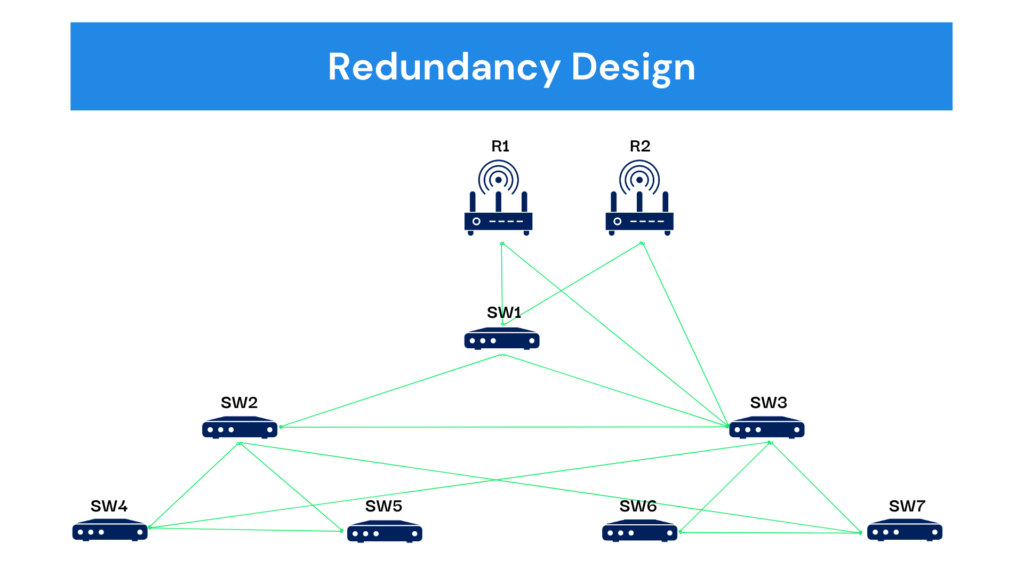
Planning a secure, efficient, and reliable network can be quite the undertaking but thoroughly considering the components of the design will result in a successful implementation.
What are you waiting for? Start browsing for the perfect hardware for your new or improved network!
